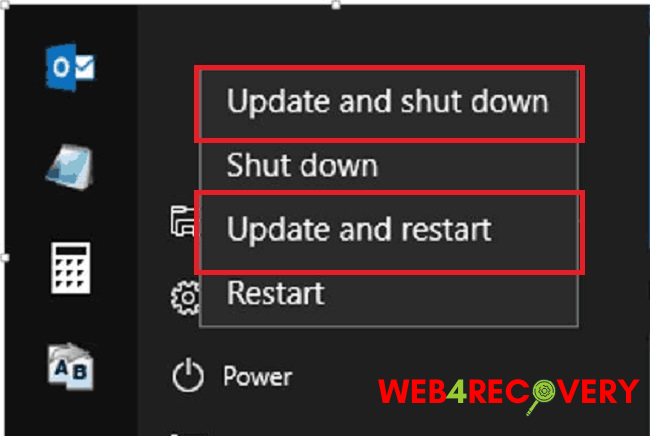Windows 10 regularly releases updates to enhance system functionality, security, and performance. However, at times, users may encounter an issue where the update shutdown or restart notification persists and won’t go away.
This can be frustrating, as it disrupts normal computer usage. In this detailed article, we will explore the possible causes behind this issue and provide effective methods to fix it.

Possible Causes of Windows 10 Update Shutdown Restart Notification Stuck
Before diving into the solutions, let’s understand some common causes for the Windows 10 update shutdown or restart notification to persist:
- Pending Updates: The most common reason for the notification to persist is when Windows 10 has pending updates that require a system restart to complete the installation.
- Update Installation Failure: In some cases, an update may fail to install correctly, causing the notification to remain.
- Software Conflicts: Certain software or services running on your computer may conflict with the update installation process, preventing the notification from disappearing.
Now, let’s explore the solutions to address this issue.
Methods to Fix Windows 10 Update Shutdown Restart Notification Won’t Go Away
1. Restart Your Computer
A simple restart can often resolve minor software glitches, including the issue of the update shutdown or restart notification not going away. Save your work, close all applications, and restart your computer. After the restart, check if the notification has disappeared.
2. Install Pending Updates
If the notification persists, it’s possible that there are pending updates that need to be installed. Follow these steps to install the updates:
- Press Win + I to open the Windows Settings.
- Select Update & Security.
- Click on Windows Update in the left-hand menu.
- Click the Check for updates button and wait for Windows to search for available updates.
- If updates are found, click the Install button and follow the on-screen instructions.
- Restart your computer after the updates are installed.
3. Run Windows Update Troubleshooter
Windows 10 provides a built-in troubleshooter that can help identify and resolve common update-related issues. Follow these steps to run the Windows Update troubleshooter:
- Press Win + I to open the Windows Settings.
- Select Update & Security.
- Click on Troubleshoot in the left-hand menu.
- Scroll down and click on Additional troubleshooters.
- Select Windows Update and click on the Run the troubleshooter button.
- Follow the on-screen instructions to complete the troubleshooting process.
4. Clear Windows Update Cache
Corrupted Windows Update cache can sometimes cause issues with update installations. Clearing the Windows Update cache might help resolve the problem. Here’s how:
- Press Win + X and select Command Prompt (Admin) or Windows PowerShell (Admin).
- Type the following commands one by one and press Enter after each command:
net stop wuauservnet stop cryptSvcnet stop bitsnet stop msiserver
- Type the following command and press Enter to rename the SoftwareDistribution folder:
ren C:\Windows\SoftwareDistribution SoftwareDistribution.old
- Type the following commands to restart the services:
net start wuauservnet start cryptSvcnet start bitsnet start msiserver
- Close the Command Prompt or Windows PowerShell.
- Restart your computer.
5. Perform a System Restore
If the above methods don’t resolve the issue, you can try performing a system restore to revert your computer’s state to a previous point before the update notification appeared. Keep in mind that this will undo any changes made after the selected restore point.
- Press Win + R to open the Run dialog box.
- Type
rstruiand press Enter to open the System Restore wizard. - Follow the on-screen instructions to select a restore point and restore your system.
Conclusion
Encountering a persistent Windows 10 update shutdown or restart notification can be frustrating, but with the methods provided in this article, you can effectively address the issue.
Whether it’s by installing pending updates, running the Windows Update troubleshooter, clearing the update cache, or performing a system restore, you can resolve the problem and restore normal computer usage.
Remember to keep your system up to date to avoid future issues and ensure the best performance and security for your Windows 10 device.

















